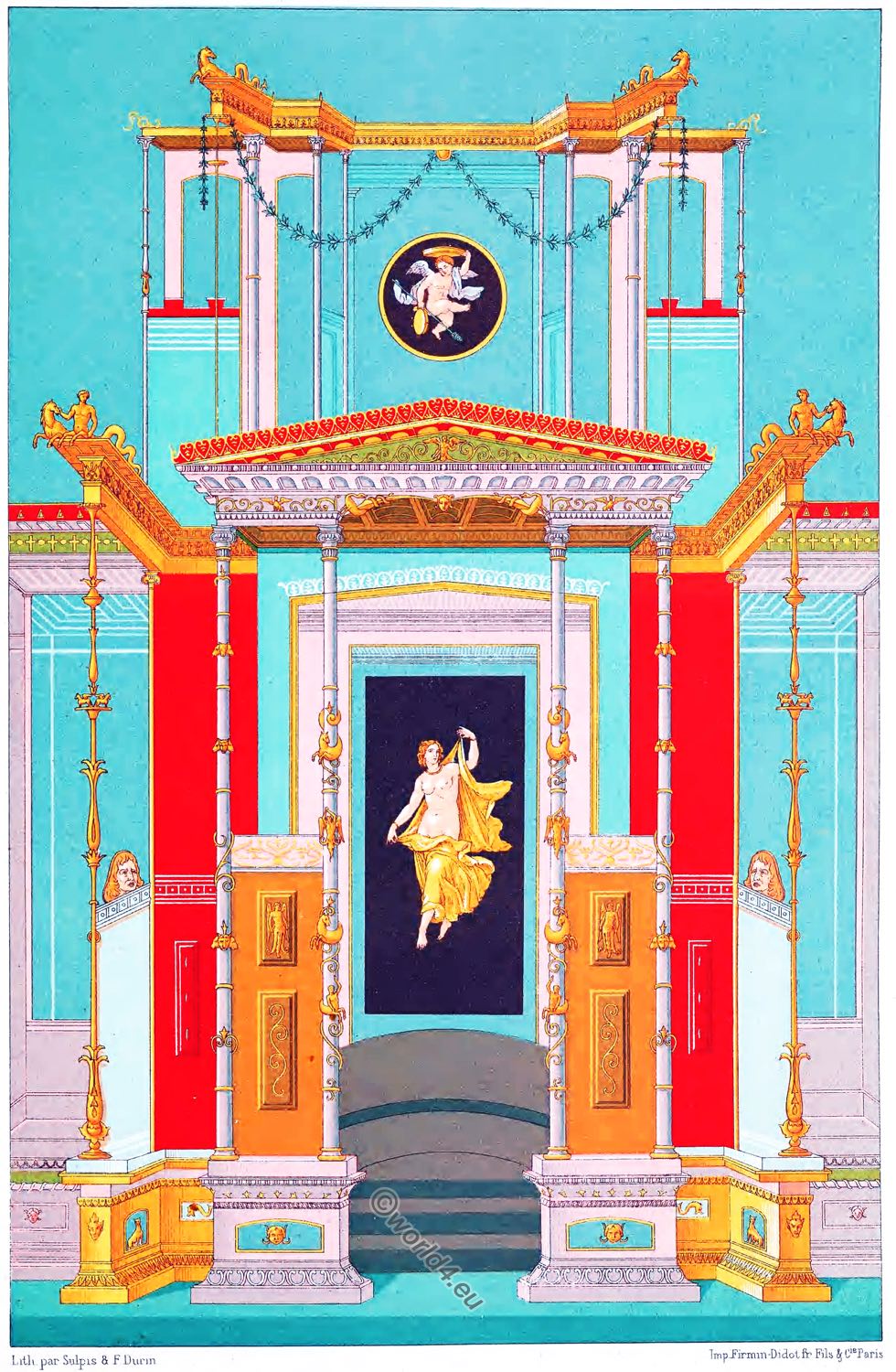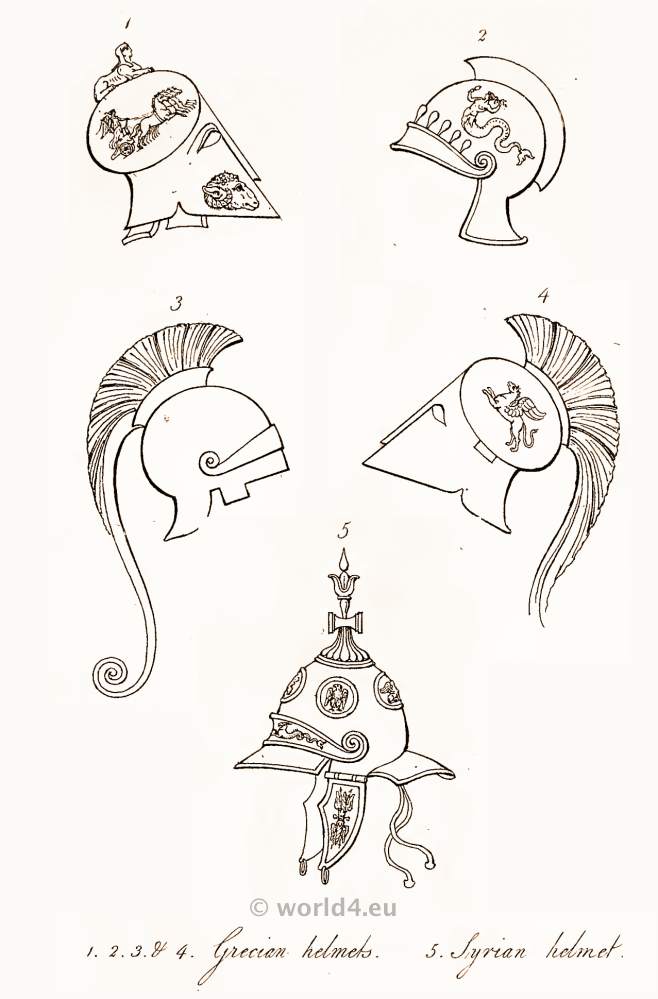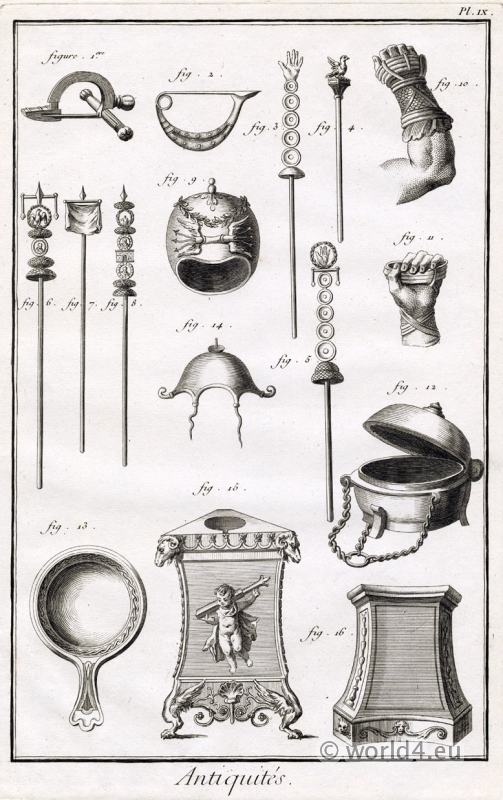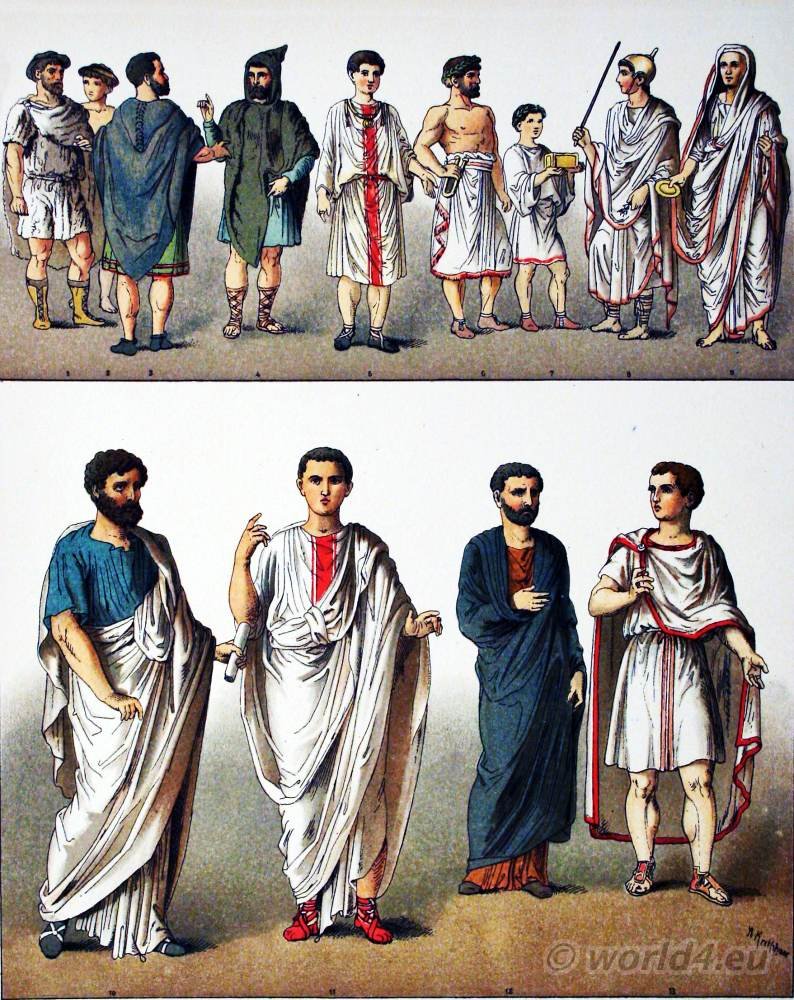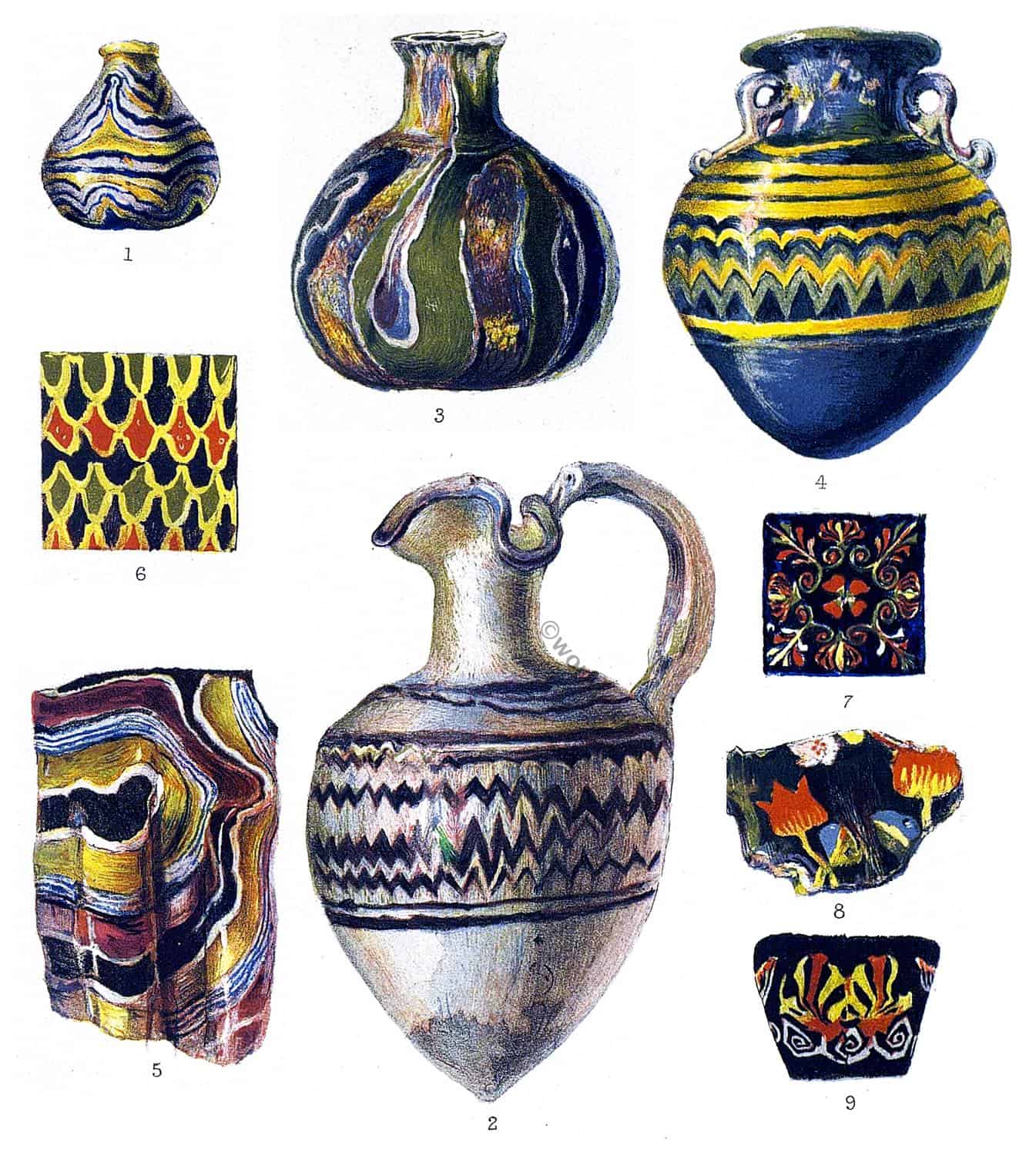
Nine Specimens of Ancient Glass.
Roman and Greek Glass.
- A pear-shaped Bead, of blue glass, with wavy bands of yellow and white enamel.
- A Cruche, or Œnochœ, Wine-pourer, of globular form, with compressed trefoil lip, pointed base, of opaque white glass, the surface covered with iridescence round the centre is a; double band of black zig-zags and lines, continued round the neck and lip. This jug, or ewer, which sometimes had a flat foot, was used at the symposia, or drinking parties of the ancients, to supply the cups of the guests with the mixture of wine and water, the usual drink of the Greeks at such feasts, the jugs being first filled from a large vessel called a crater.
- A small Bottle, of globular form, with short neck; the body is of a sea-green colour, with three wide bands of dark blue, green, and gold, edged with white, looped together at the neck. This is a very rare and beautiful specimen. Found in the environs of Naples.
- A small Amphora, of globular form, pointed base, of dark green glass, with yellow and turquoise chevrons round the middle edged with yellow. This example differs from the usual type, which is tall and narrow.
- A portion of a ribbed CUP, or bowl, in imitation of onyx, veined with yellow, red, white, and blue, the body of a fine brown Sard colour. The vessel of which this is a fragment must have been of considerable diameter.
- A square FRAGMENT of Mosaic Glass, with festooned ornaments of red and green, edged with yellow on a dark ground.
- A square Tablet of Mosaic Glass, having in the centre a rosette with points, radiating to the four corners of various coloured threads on a dark ground.
- A FRAGMENT of MOSAIC Glass, with tulips on a dark ground.
- Another FRAGMENT of Mosaic Glass, in which the ornament is an imitation of the
well-known honeysuckle pattern, so frequently introduced in Grecian architecture. In all these mosaics the colours are continued throughout the entire thickness.
Source: A catalogue of the antiquities and works of art exhibited at Ironmongers’ Hall, London: in the month of May, 1861 by Worshipful Company of Ironmongers (London, England); London and Middlesex Archaeological Society. London: Harrison and Sons.
Related
Discover more from World4 Costume Culture History
Subscribe to get the latest posts sent to your email.

